| Helictites
Disha
Miglani
Recently,
I made a recreational trip down to the Jenolan Caves (aka
Binoomea, "dark places," by the Aboriginal population)
in NSW Australia.
Helictites
are interesting limestone formations that defy the universal
principle of gravity. They caught my interest when our
tour guide explained that it is still not known how indeed,
the unusual, twisted shaped, helictites form. There are
three possible explanations.
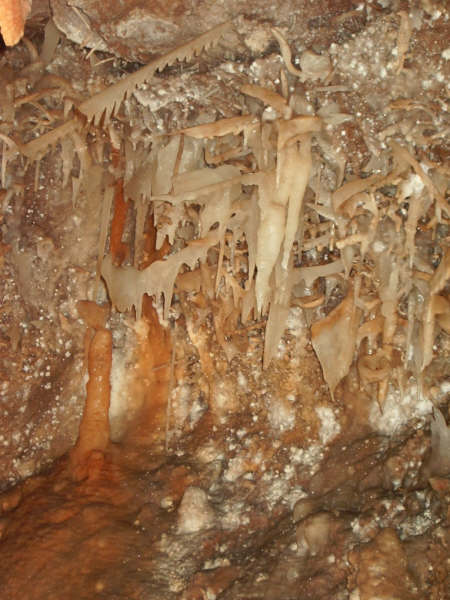 |
| 1.
The wind currents in the cave favour growth in a particular
direction, by causing changes in the direction of
dripping water. |
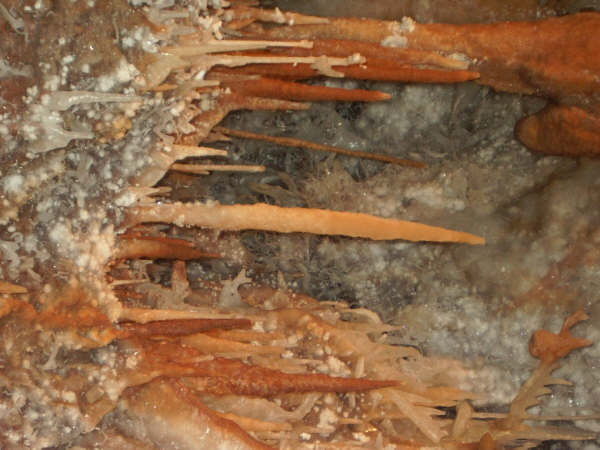 |
| The
problem with this theory is that there is no natural
entrance into the cave, in which case there would
have been no wind. Secondly, the wind changes direction
very often, whilst the growth process is extremely
slow, and the quick changes in air currents could
not have caused all the various shapes. |
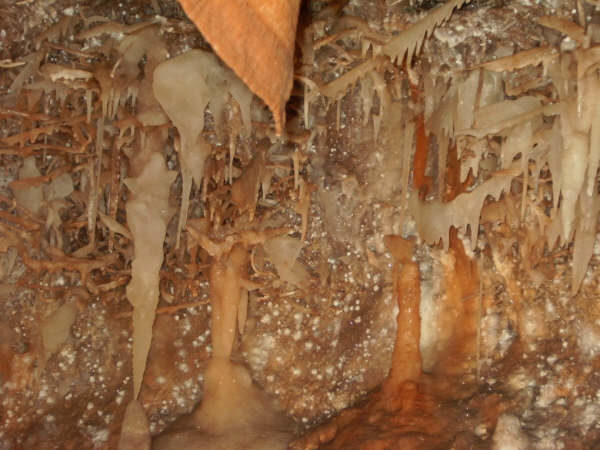 |
| 2.
The impurities deposited in the calcite and the minerals
in the water have aphipathic properties, i.e they
repel and attract each other and the water molecules,
causing the various shapes in the limestone. |
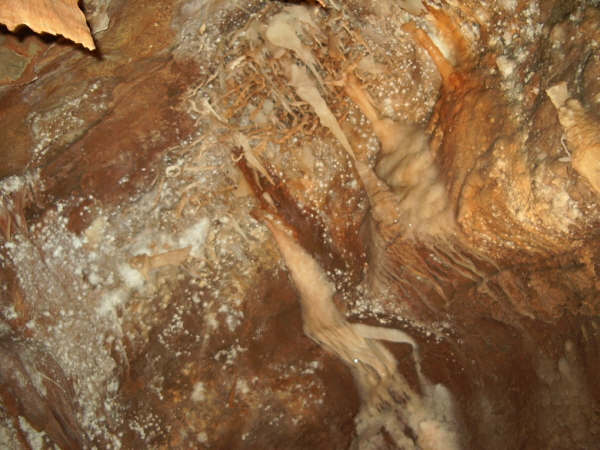 |
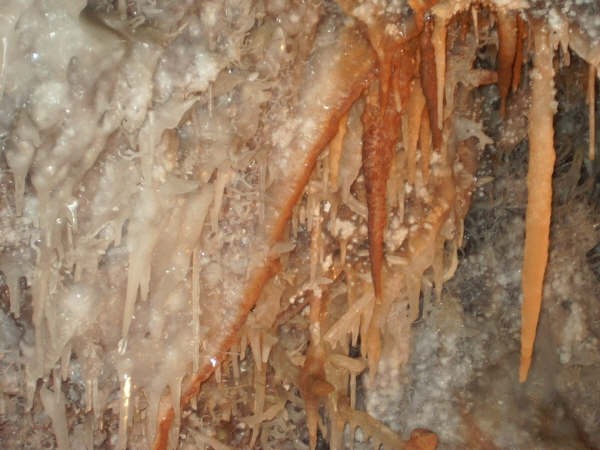 |
| 3.
The Internal Hollow Straw Theory. This theory assumes
that during the formation of the helictites, there
was a thin central tube in which, water flowed as
in straws. Capillary forces were then able to transport
water ignoring gravity. During dry periods, the central
channel became plugged, and when flow resumed, the
pressure forced new channels out of the side of the
original one. |
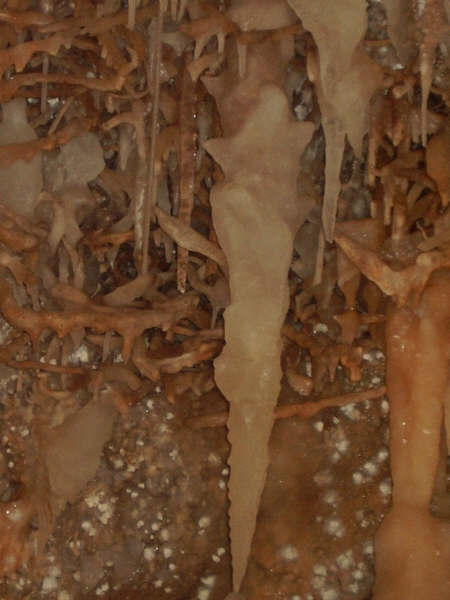 |
| So,
Do you have any ideas on how helictites form? If you
do, please email us your possible theory, and the
best responses will be posted on the website. Please
limit your explanations to 100 words and email them
to onset@unsw.edu.au
by the 30th March 2005. |
The
photos above were taken inside the Orient Cave.
Also View:
Cave
Images at Jenolan
|